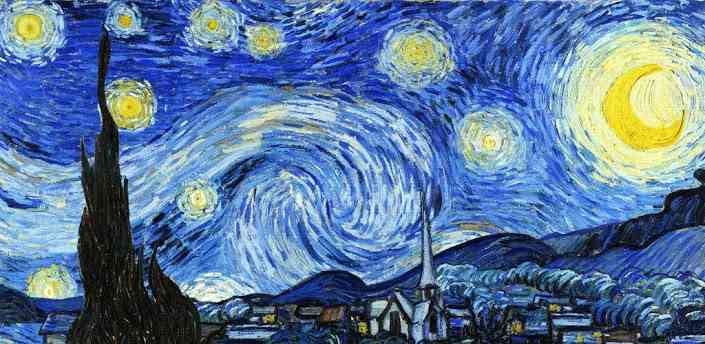Look Up at the Starry Night
Summer is strikingly beautiful: long days; plants and trees endowing us with their joyful, fresh colors, and warm nights that invite us to skip watching TV and instead, to look at the stars and the limitless universe. Our time is so occupied and passing by so quickly that even during the summer it is not easy to take a break from work and daily errands. But let’s succumb to the beauty of the starry sky and allow ourselves to be amazed by the multitude of celestial objects and the grandeur of the universe.
I suspect that the famous German philosopher Immanuel Kant (d. 1804) must have been looking at stars with awe quite frequently since he left a powerful reflection about the universe. He spent his entire life in the town of Konigsberg, Poland, later Germany, now Russia. On his grave, there is an inscription that is a direct quote from his book, Critique of Practical Reason. In English it reads:
“Two things fill the mind with ever new and increasing admiration and reverence, the more often and more steadily one reflects on them: the starry heavens above me and the moral law within me.”

Although Kant was a genius, he made fundamental mistakes. His philosophy, paradoxically against his intentions, led to moral liberalism. But Kant’s reflection above, as simple as it is, is stunning. Truly, there is nothing more magnificent in the universe than the universe itself and the human being with his or her moral code. One can even understand his statement not as two separate extraordinary things that he is amazed at but as closely connected things. We could read Kant’s words in this way: if we are so amazed, and rightly so by the grandeur of the stars, how amazing then must be the moral law that is within us. The existence of moral law greatly exceeds the unmeasurable vastness of the universe! This is the probable emphasis which Kant wanted to present.
But let’s put aside for now the moral code and focus on the universe itself. On a very dark and clear night, we can see various constellations of stars, planets, comets, meteors, etc. We can also see the spectacular Milky Way, that is our galaxy seen from the inside, where our planet is located. To realize the vastness of all this, let’s remind ourselves that there are 200 billion to 2 trillion galaxies in the observable universe, and there are billions of stars in every galaxy – an unimaginable number! All of this came out of nothing, by the creative will of an amazing person, a Triune God.
The moment of creation, point zero, is supported by the Big Bang theory – a physical theory that describes how the universe expanded from a primordial state of high density and temperature. It was first proposed as a physical theory in 1927 by a Roman Catholic priest and physicist Georges Lemaitre. He suggested the universe emerged from a “primeval atom”. Two years later, Edwin Hubble independently published similar findings. Because Hubble wrote in English not in French as Fr. Lemaitre, Hubble’s finding was more known worldwide and was named after him – the Hubble law. However, a few years ago the International Astronomical Union corrected the omittance and changed the name of the Hubble law to Hubble-Lemaitre law.
Fr. Georges Lemaitre was a professor at the Catholic University of Leuven in Belgium. His work is excellent proof that there is no contradiction between science and faith. Although science and faith use different premises, they lead to the same truth, and there can only be one truth.
Who knows if Kant, admiring the starry summer night, was not inspired by the well-known Psalm 8:
Lord, our Lord, how majestic is your name in all the earth! You have set your glory in the heavens. When I consider your heavens, the work of your fingers, the moon and the stars, which you have set in place, what is mankind that you are mindful of them, human beings that you care for them?
Fr. Mark Jurzyk
